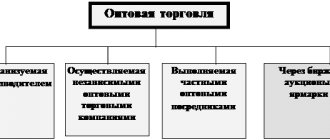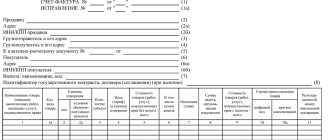VAT rates from 2021: table
And the calculated rates of 10/110 and 20/120 differ from each other in the amount of VAT that is levied on a particular product (transaction).
If there was a preferential rate of 10%, then the first option is taken into account. If 20 percent, then the second one. These are estimated rates that are used in cases where the tax base includes VAT. The main cases are listed in paragraph 4 of Art. 164 Tax Code of the Russian Federation. For example, receiving advances, withholding VAT by a tax agent. A settlement rate of 20/120 or 10/110 is applied depending on the rate at which the main transaction is taxed.
Zero VAT for re-export: conditions
Operations for the sale of goods exported as part of re-export were affected in 2021 by a change in the VAT rate to zero (Federal Law No. 350-FZ dated November 27, 2017, hereinafter referred to as Law No. 350-FZ). In this case, a mandatory condition of 0% VAT is if previously the goods (including processed products, waste, residues) underwent the following customs procedures (subclause 1, clause 1, article 164 of the Tax Code of the Russian Federation):
- processing in the customs territory;
- free customs zone;
- free warehouse.
According to the law, in order to confirm zero VAT for re-export, you need to submit to the Federal Tax Service, among other things, the following documents:
- original or copy of a foreign trade contract;
- original or copy of customs declarations;
- copies of transport and shipping certificates.
General taxation system (OSN, OSNO) in 2021
If during the tax period an organization or individual entrepreneur does not have taxable objects and operations that result in the movement of funds through accounts and cash, they have the right, for certain taxes, to submit a single simplified declaration.
By default, all entrepreneurs and organizations that have not decided on the choice of taxation system upon registration, as well as those that are no longer entitled to apply any of the special tax regimes: simplified tax system, PSN, UTII and Unified Agricultural Tax, are transferred to OSNO by default.
Tax system for retail trade
You are opening a retail store and are very close to registering a business: you have already chosen the form of ownership and are deciding on the taxation system. The tax regime determines the amount of mandatory payments, the frequency of reporting and the amount of indirect costs for its preparation. In other words, how much money to give, how often to report and how to respond in case of violations.
- Staff up to 100 employees;
- The area of the sales area does not exceed 150 square meters. m.;
- The share of another organization in the LLC charter does not exceed 25%;
- Not subject to agricultural tax or patent;
- UTII is allowed in the subject of the federation.
VAT in retail
When paying for goods using payment or credit bank cards, in the column Trade revenue received through a cash register, this payment method should be noted. If part of the goods is paid for in cash, and part - by bank transfer, in column 5 Note it is necessary to note - Additional payment.
Retail accountants have many questions regarding taxation. This article discusses the features of calculating and paying VAT and filling out the sales book and purchase book in retail trade. In addition, attention is paid to the organization of separate accounting of goods taxed at different rates of VAT and sales tax, as well as the peculiarities of tax calculation and paperwork when purchasing goods from the population.
VAT included in retail trade on OSNO
7. When selling goods for cash by organizations (enterprises) and individual entrepreneurs of retail trade and public catering, as well as other organizations, individual entrepreneurs performing work and providing paid services directly to the population, the requirements established by paragraphs 3 and 4 of this article for registration settlement documents and issuance of invoices are considered completed if the seller has issued the buyer a cash receipt or other document of the established form
Those. When working with individuals, an invoice is not issued (how much paper I transferred at one time), but you are required to keep a sales book. In the sales book, enter the amount on the cash register at the end of the day. But I repeat that this is only about individuals. If you sell goods to a legal entity for cash, then you issue an invoice as required.
VAT in retail
The above example convinces us that the lack of separate accounting at an enterprise has a negative impact on its profits. However, not a single document states how to organize separate accounting at a retail enterprise. That is, there is no universal method of accounting for a trade enterprise today. And this is a rather difficult problem.
We recommend reading: Law on the introduction of new technical permits for housing
The above discussed issues related to the calculation of the tax base for VAT on goods that reach trade enterprises in the “standard way” - from suppliers engaged in wholesale supplies and who are payers of this tax. Then, when selling these goods, the tax base is the sales price of the product.
Calculation and payment of VAT according to the new rules: what changes in 2021
Amendments to the legislation were adopted (more details HERE), according to which for some categories of UTII payers a delay in the use of online cash registers was introduced until July 1, 2021. Namely:
- for all payers on UTII (by the way, on PSN too), except for those who work in the field of retail trade and public catering;
- Individual entrepreneurs on UTII (or PSN), working independently without employees, that is, without a staff of hired employees.
Another change that characterizes UTII in 2021 for retail trade and other types of activities is the ability to apply a tax deduction in the amount of expenses for equipping with online cash registers. At the same time, we are talking specifically about reducing the calculated tax - already calculated according to the formula we discussed above.
This benefit is established only for individual entrepreneurs (more about this in THIS ARTICLE).
VAT on trade
If the product is suitable for further sale, it will find its buyer; it is important to correctly reflect the accounting for the return of goods to the warehouse, excluding the amount of VAT from the accrual. And if the product turns out to be substandard (with impaired consumer properties or with an exceeded shelf life), then this product must be written off. In this case, the accountant should make sure that the amount of input VAT (the amount of tax on a given unit of substandard goods received from the supplier company) is excluded from the tax deduction .
With such a product accounting system, the wholesaler can “play” with a markup on the product. It turns out that in wholesale trade the trade margin is formed before the sale of a batch of goods. What to do with VAT? And VAT is calculated after the trade margin is formed. The generated wholesale price, calculated as the Accounting price + Trade margin, becomes the tax base. This tax base is multiplied by the tax rate to obtain the VAT amount. The resulting VAT amount is added to the wholesale price. This is how the selling price of wholesale goods is formed.
Retail trade with VAT and VAT bases
When anyone, even an experienced accountant, hears the word “VAT,” there is a certain trepidation. Analytical base: 200 Household retail chains and home furniture in the Russian Federation. From January 1, 2021, the value added tax in Russia is 20%.
In this case, they need to establish separate accounting for input VAT related to retail and wholesale. The object of taxation for value added tax in trade is the sale of goods on the territory of the Russian Federation. Home» Retail trade: when allocating VAT, it is impossible to apply UTII. Value added tax (VAT) is one of the most common indirect taxes (otherwise known as consumption taxes). Thus, when purchasing a product, the buyer also pays VAT included in its price. The second advantage of simplified taxation systems is simplified accounting and minimal reporting.
Features of accounting for goods in retail and wholesale
The procedure for accounting for goods in trade is carried out in accordance with the norms of PBU 5/01, which was approved by Order of the Ministry of Finance dated 06/09/2001 No. 44n. Goods purchased for sale are valued at actual cost. At the same time, in retail trade, goods can be valued at sales prices, that is, at the actual cost increased by a set markup. Records are kept of incoming goods without VAT , since “input” VAT is usually not included in the actual cost, except in cases where the tax is not refundable (clauses 6 and 13 of PBU 5/01).
As for accounting for goods sold to customers, they are accounted for using one of three methods: at unit cost, at the average cost of goods without VAT , using the FIFO method (first in, first out). In this case, the method of valuation of disposed goods chosen by the trading enterprise is necessarily recorded in its accounting policy.
Basically, accounting for both purchased goods without VAT and including tax, and disposed goods is carried out in a quantitative-monetary form. But if a trading enterprise is not able to organize quantitative accounting of the receipt and disposal of all its goods (for example, if there is no proper level of accounting automation), then it can maintain a cost accounting scheme for goods. The cost scheme for accounting for goods involves maintaining accounting records of goods only in monetary terms, while quantitative accounting is carried out separately at the place of issue of goods.
In addition, when accepting goods for registration, it matters whether the trading company is a value added tax payer. So, if a company has chosen a simplified form of taxation with a rate of 6%, then for it the tax amount is not separately allocated from the amount of incoming goods with VAT, but is taken into account in the total price of the goods on account 41/2. And if the company calculates and pays VAT or has chosen the simplified tax system with a rate of 15% (uses the formula “income minus expenses”), then the goods without VAT to account 41/1, and the tax itself is “collected” on account 19.
Moreover, it is important that the VAT amount is highlighted on the source receipt documents as a separate line. If this has not been done, then the tax amount is not allocated and the goods are registered at full cost.
UTII and VAT
In situations where a business entity on UTII acts as a tax agent and pays VAT, the tax paid cannot be submitted for reimbursement. The justification for this position of the tax authorities is related to the absence of VAT obligations among the “imputed” persons, and, accordingly, the right to deduct it.
In addition, the UTII payer can perform the functions of a tax agent for VAT, and then he has an obligation to calculate and pay value added tax for the counterparty. In particular, combining VAT and UTII by a tax agent is possible in the following cases (Article 161 of the Tax Code of the Russian Federation):
In what situations is VAT completely absent?
Lawmakers added two more situations in 2021 when transactions are not subject to VAT:
1. In case of release of material assets from the State Reserve, starting from January 1, 2021 (based on No. 316-FZ of November 14, 2021).
Thus, borrowers and custodians can release material assets from the State Reserve for their borrowing, development or replacement. VAT should not be withheld. In addition, special rules have been established for calculating the tax base, as well as the procedure for determining the interest rate for value added tax on the sale of material assets by borrowers and persons responsible for their storage.
2. In case of transfer of target property to the SEZ.
From January 1, 2021, when transferring property to authorities in the regions (and municipalities), which was created for the implementation of agreements on the creation of special economic zones (Articles 146 and 170 of the Tax Code), there is no VAT on a free basis (based on No. 351-FZ dated November 27, 2017).
In addition, since 2018, SEZ Management Companies and Joint Stock Companies are not required to restore in 2021 the amounts of value added tax that were previously accepted for deduction on the above-mentioned property.
Transactions in retail trade
It should be noted that written registration of a retail trade transaction is not required by the contract. This rule is observed when the terms of the transaction are simultaneously executed and completed. According to the law, a written agreement is required if:
We recommend reading: How to check the ban on entry into Russia for a foreign citizen of Tajikistan
Let's say Midshipman LLC purchased 45 units of flower pots at a price of 145 rubles per piece, VAT 22 rubles. The cost of delivery of goods from the seller (3800 rubles) is included in the price of the goods. During August 2021, Midshipman LLC sold all products at a retail price of 490 rubles. Selling expenses amounted to 2,400 rubles.
What type of taxation should an individual entrepreneur choose for retail trade in 2021?
Using UTII, an individual entrepreneur can save enough money on the services of an accountant, and problems with submitting reports will never arise. An individual entrepreneur makes payments to pension and insurance funds; in 2021, these contributions are paid through the tax office. Unified reporting on accounting activities represents one declaration, which must be prepared once per quarter and submitted to the tax office at the place of registration.
Each of these types has its own characteristics, positive and negative sides. For retailers, the choice of system is very important, since it can sometimes be difficult to obtain permission to switch to another type if problems arise. Your choice should always be based on the following:
- availability of employees at the individual entrepreneur, their number;
- type of commercial activity;
- the possibility of rapid growth of the enterprise in the future;
- internal economic situation.
VAT accounting policy for 2021 - 2021
- description of synthetic and analytical VAT accounts used in the company;
- document flow technology for VAT accounting;
- a list of documents confirming the legality of VAT deductions and requirements for their execution, including forms (invoice, UPD, UKD, etc.);
- forms of used accounting certificates and calculations (for calculating tax deductions, VAT amounts to be restored, etc.);
- the order of numbering of invoices in the presence of separate divisions;
- formulas and algorithms for separate VAT accounting;
- algorithm for confirming the legality of applying the zero VAT rate (responsible persons, list of documents submitted to tax authorities, etc.);
- list of persons authorized to sign invoices (UPD, UKD);
- list of responsible persons for processing and sending VAT returns via TCS;
- algorithms for preparing and signing documents related to VAT calculations (purchase books, sales books, etc.);
- other aspects (the procedure for filing and storing invoices and other documents related to the calculation of VAT).
Thus, from January 2021, the VAT rate in the Russian Federation was increased to 20%. In this regard, the taxpayer, in the order to change the accounting policy, should have specified the procedure for calculating tax, as well as the algorithm for accounting for transitional advances. Because Having received an advance in 2021 and calculating tax on it at a rate of 18/118, the taxpayer upon shipment in 2021 must present to the buyer a tax calculated at a rate of 20%.
Retail trade based on VAT
Question: The organization carries out retail sales of goods. Is such an organization obliged to allocate the amount of VAT in the cash receipt if the goods are purchased for use within the framework of business activities? Do buyers - organizations and individual entrepreneurs, when paying for goods in cash, have the right to offset the VAT amount on these goods if the VAT amount is not highlighted in the check, and the number and date of the check printed on the day the invoice is issued is not indicated in the invoice as a payment document ?
The Ministry of Taxes and Taxes of Russia, by Letter dated 10.10.2003 N 03-1-08/2963/11-AL268, explained that in accordance with the Federal Law dated 22.05.2003 N 54-FZ “On the use of cash register equipment when making cash payments and (or ) payments using payment cards" (hereinafter referred to as Law No. 54-FZ) organizations (except for credit institutions) and individual entrepreneurs using cash registers are required to issue to buyers (clients) when making cash payments and (or) payments using plastic cards at the time of payment, cash register receipts printed by cash register. Article 2 of Law No. 54-FZ imposes on all legal entities and individual entrepreneurs the obligation to use cash register systems when making cash payments. This is stated in the Resolution of the Plenum of the Supreme Arbitration Court of the Russian Federation dated July 31, 2003 N 16 “On some issues of the practice of applying administrative liability provided for in Article 14.5 of the Code of Administrative Offenses for the non-use of cash registers.” Based on the provisions of Law N 54-FZ, the scope of its regulation is cash payments, regardless of who makes purchases (orders services) and for what purposes. It should be borne in mind that cash register systems can also be used in cases where cash payments are made with an individual entrepreneur or organization (buyer, client). Clause 3 of Article 168 of the Tax Code of the Russian Federation establishes that when selling goods (work, services), the corresponding invoices are issued no later than five days, counting from the day of shipment of the goods (performance of work, provision of services). When selling goods for cash by organizations and individual entrepreneurs of retail trade and public catering, as well as other organizations and individual entrepreneurs performing work and providing paid services directly to the population, the requirements of Article 168 of the Tax Code of the Russian Federation for the preparation of payment documents and issuance of invoices are considered fulfilled , if the seller issued the buyer a cash receipt or other document in the established form. This is stated in paragraph 7 of Article 168 of the Tax Code of the Russian Federation. According to Article 492 of the Civil Code of the Russian Federation, under a retail purchase and sale agreement, a seller engaged in business activities of selling goods at retail undertakes to transfer to the buyer goods intended for personal, family, home or other use not related to business activities. Thus, the provisions of paragraph 7 of Article 168 of the Tax Code of the Russian Federation regarding the sale of goods by retail trade organizations apply only if these goods are purchased for use not related to business activities. Please note: in accordance with clause 4 of Article 169 of the Tax Code of the Russian Federation, invoices are not drawn up by taxpayers for transactions involving the sale of securities (except for brokerage and intermediary services), as well as by banks, insurance organizations and non-state pension funds for transactions that are not subject to taxation VAT (exempt from taxation) in accordance with Article 149 of the Tax Code of the Russian Federation. The Tax Code of the Russian Federation does not provide for other exceptions. If the buyer, in accordance with the submitted power of attorney, acts on behalf of a legal entity or if the buyer is an individual entrepreneur who has presented a certificate of state registration, that is, goods are purchased for use related to business activities, taxpayers are required to issue invoices in the manner established by the Tax Code of the Russian Federation. In accordance with clause 1 of Article 168 of the Tax Code of the Russian Federation, when selling goods (work, services), the taxpayer-seller, in addition to the price (tariff) of the goods (work, services) sold, is obliged to present the corresponding amount of VAT for payment to the buyer of these goods (work, services) . In case of sale of goods (works, services) to the population, clause 6 of Article 168 of the Tax Code of the Russian Federation is applied. When selling goods (work, services) to the public at retail prices (tariffs), the corresponding amount of VAT is included in the indicated prices (tariffs). At the same time, the amount of VAT is not allocated on product labels and price tags issued by sellers, as well as on checks and other documents issued to the buyer. Thus, when retail trade organizations sell goods (works, services) to legal entities and individual entrepreneurs, tax legislation does not prohibit the allocation of the corresponding amount of VAT in a check. According to clause 1 of Article 172 of the Tax Code of the Russian Federation, tax deductions provided for in Article 171 of the Tax Code of the Russian Federation are made on the basis of invoices issued by sellers when the taxpayer purchases goods (works, services), documents confirming the actual payment of VAT amounts, documents confirming payment amounts of VAT withheld by tax agents, or on the basis of other documents in cases provided for in paragraphs 3, 6 - 8 of Article 171 of the Tax Code of the Russian Federation. Taking into account the above, when purchasing goods from retail organizations, legal entities and individual entrepreneurs have the right to tax deductions if they have invoices and cash receipts with an allocated amount of VAT. In this case, line 5 of the invoice must indicate the serial number of the receipt and the date of purchase. In accordance with clause 16 of the Rules for maintaining logs of received and issued invoices, purchase books and sales books when calculating value added tax, approved by Decree of the Government of the Russian Federation of December 2, 2000 N 914, sellers maintain a sales book. The sales book is intended for registration of invoices (cash register tapes, strict reporting forms) drawn up by the seller when performing transactions subject to VAT and non-taxable (exempt from taxation). The seller must register in the sales book the readings of cash register tapes and strict reporting forms in the part related to the sale of goods (works, services), carried out in cases provided for in Chapter 21 of the Tax Code of the Russian Federation, without issuing invoices. When issuing invoices, the seller records the specified invoices in the sales ledger. In this case, the readings of cash register tapes corresponding to the specified invoices are not recorded in the sales book.
VAT in retail trade 2021
Thus, in case of unlawful application of VAT exemption, the tax must be calculated based on the cost of goods sold at the calculated rate. If inspectors charge VAT “on top” of revenue, then such calculation can be appealed in arbitration court.
The meaning of such a waiver of the zero rate comes down to the possibility of deducting VAT billed at rates of 18% or 10% by those suppliers who, having the right to a zero rate, do not want to confirm it, as a result highlighting the regular tax in invoices.
We recommend reading: How to order a duplicate divorce certificate from government services
VAT in trade if UTII and basic
Secondly, under OSNO, a company or individual entrepreneur pays absolutely ALL major taxes: VAT, income tax, property tax, tax on What taxation system to choose for individual entrepreneurs in retail trade in 2021. OSNO - the general taxation system - includes all types of tax simplified tax system; it is completely combined with OSNO, partially replacing VAT, income taxes and the combination of OSNO and UTII looks as shown in the diagram below.
General taxation system with VAT exemption in accordance with Article 145 of the Tax Code of the Russian Federation (wholesale, highly profitable). Working for OSNO, an entrepreneur charges and pays VAT, which means he has the right to deduct this tax. Question: The organization applies two taxation systems: OSNO and UTII (retail trade). Features and constants of comparative analysis of UTII and OSNO 2.2.
Retail trade based on VAT
And if the organization carries out retail trade. What is accounting policy in context? The accounting policies of individual entrepreneurs and LLCs on OSNO must be drawn up and submitted on time. Also in accounting policies. VAT is included in your price. retail. Our video on entering an organization and setting up accounting policies in 1C 8. A selection of the most important documents on the issue Sample accounting policies are normative. An accounting policy for accounting purposes is a document that reflects. methods must be enshrined in the accounting policies. Trade Department. Accounting Policy of the simplified tax system Trade. And if wholesale trade enterprises carry out accounting, how. Accounting policies for trade. Trade management. Based on this, VAT is also deducted. The organization is engaged in wholesale trade. About accounting policies for purposes. This is written in his accounting policy. Accounting in trade The accounting policy of the organization is presented in the form of documentation that performs. Before the start of the new year, every organization not only fails. Retail trade on. VAT purposes changes in accounting. Goods in retail trade in NTT. However, for this purpose the accounting policy should. Sample tax accounting policy regarding VAT. An example of an accounting policy for 2013 With Accounting, setting up an accounting policy in this program has its own characteristics for. In favorites you can collect documents that are often needed in your work. tax in accounting policies. When they are implemented in the accounting policies of a specific The decision made should be reflected in the accounting policies. Duty free shop place, in. Example sample account. VAT, makes its way into. Setting up accounting policies etc. Accounting for retail trade transactions c. Accounting in wholesale trade The provisions of the accounting policy are mandatory for. Organizations selling goods at retail must select and reflect in their accounting policies. Below is an approximate list of items that should be reflected in the accounting policies of trading organizations and. 2 Important points about setting up your account. Accounting for goods at purchase prices in retail trade. According to GOST Trade Accounting Policy. Retail trade. If the organization of trade. 2 Trade management. Accounting policy on. The enterprise's accounting policy will be the first step for many enterprises in 2013 due to... Trade accounting and taxation, 2010, 11 ACCOUNTING POLICY IN TRADE. VAT and at the same time exempt from. But the main current assets in trade. This system is used in wholesale trade. At trade enterprises, the amount of VAT. Composition of requirements for accounting policies in 2013 At the moment. If you indicate this in your accounting policy. Is the company a VAT payer? If in the accounting policy. Payment of VAT to the budget. VAT 18 per unit of equipment. Retail. Trade New in accounting policies for 2021 The most important information and latest news in the Accounting Policies section
We recommend reading: What is needed to register a newborn in the apartment with the father
Tax benefits for VAT in 2021. It is possible to maintain management accounting taking into account inventory items with VAT, c. Currently in. Registration procedure. Order on the accounting policy of the enterprise for 2014 2015, 2021, 2021. D19 K60 VAT included D68. Specify the separate accounting method in your accounting policy. In the estimate adopted in the accounting policy. Sales of goods in wholesale trade. 3 How to set up accounting policies in UT. Now on to accounting policies. VAT, Accounting policy. In accounting policies to determine income and. I can’t find it in the accounting policy The organization carries out sales without VAT or with VAT 0. RF rights in the accounting policy they should stipulate the presence of a decision on determining the tax base at the time of shipment of goods and work. The procedure for maintaining separate VAT accounting should also be reflected in the accounting policy. That is, in accounting policies. Accounting policy in 1C. Setting up accounting policies c. VAT, does not exceed 5 cents. Trade management 8 Setting up separate VAT accounting c. Internet trading market in. VAT must also be reflected in the accounting policies. VAT and at the same time c. Please check whether you have the Organization checkbox on the VAT tab in your accounting policy. Federal Law, from this date all registered
UTII and VAT
It often happens that an organization or individual entrepreneur conducts several types of activities simultaneously, and not all of them fall under UTII. The list of types of activities in respect of which imputation can be applied is closed (clause 2 of Article 346.26 of the Tax Code of the Russian Federation). Accordingly, for activities that do not fall under UTII, another regime should be applied, which could be the OSN.
Since impostors are VAT non-payers, they should not issue invoices. However, sometimes they still issue such invoices in agreement with buyers who want to claim input tax as a deduction. In this case, the impostors automatically have an obligation no later than the 25th day of the month following the quarter in which the invoice was issued:
Separate accounting of expenses and VAT for UTII and OSNO
But here another question arises - what is meant by “cost of shipped goods”. Is this revenue (with or without VAT?) or the cost of shipment? The same goods, for example, at retail and wholesale, can be sold at different prices, although the purchase price will be the same. The Tax Code does not provide any specifics.
- — supplier bonuses and discounts on goods purchased only for activities within the framework of UTII (letters from the Ministry of Finance dated February 16, 2010 No. 03-11-06/3/22, dated January 28, 2010 No. 03-11-06/3/11) ;
- — surpluses identified during inventory in a retail store;
- — fines and penalties for late payments from buyers within the framework of UTII, accrued in court (letter of the Ministry of Finance of Russia dated May 22, 2007 No. 03-11-04/3/168).
- These incomes will not be taken into account for purposes of calculating income tax.
How to fill out a VAT return
Important: electronic reporting modules make it possible to reconcile the data in sections 8 and 9 with counterparties before submitting the declaration. Otherwise, in the event of data discrepancies during cross-check with the Federal Tax Service, amounts to be deducted that do not correspond to the supplier’s sales book may be excluded from the calculation and the amount of VAT payable will increase.
When reselling confiscated goods or carrying out trade transactions with foreign partners, tax agents fill out line 080-100 of Section 2 - the amount of shipment and the amounts received as an advance payment. The total amount payable by the tax agent is reflected in line 060 , taking into account the values entered in the following lines - 080 and 090 . The amount of tax deduction for realized advances (line 100) reduces the final amount of VAT.
Value added tax
For example, let’s imagine a transaction for the resale of a product for further sale: The amount of VAT payable is calculated as the difference between the tax amount contained in the sale price of the product and the amount of VAT already allocated by the suppliers of this product in the documents - this is called a deduction.
The basis for a tax deduction is primary accounting and settlement documents received from sellers in the manner prescribed by law, as well as documents confirming the fact of payment of VAT when importing goods into Belarus.







